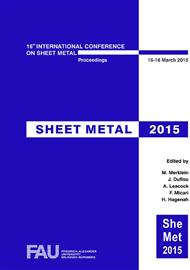p.411
p.419
p.427
p.435
p.443
p.451
p.459
p.469
p.477
Creep Behaviour of AA6016 during Automotive Paint Drying Processes
Abstract:
Modern car-bodies consist of different types of metals in order to gain the best crash performance at minimal weight. After the press and body shop, the bodies in white run through several paint drying processes, where also alloys of the 6xxx series become heat-treated. Consequently, the different thermal expansion behaviour of joined aluminium-steel components leads to high bending stress conditions within the car body structure while they heat up to 200 °C. In order to describe the process deformations numerical simulations were developed, where appropriate material models are necessary. Especially aluminium alloys with a melting point of about 600 °C can exhibit viscoplastic behaviour at 200 °C under stress. In this work, creep characteristics of the aluminium alloy AA6016 are investigated using a bending test. Based on these results an adequate model for finite element (FE-) simulations of creep strains is pointed out, which can be used for novel analyses of the whole car body in the automotive e-coat drying process.
Info:
Periodical:
Pages:
443-450
Citation:
Online since:
March 2015
Keywords:
Price:
Сopyright:
© 2015 Trans Tech Publications Ltd. All Rights Reserved
Share:
Citation:


